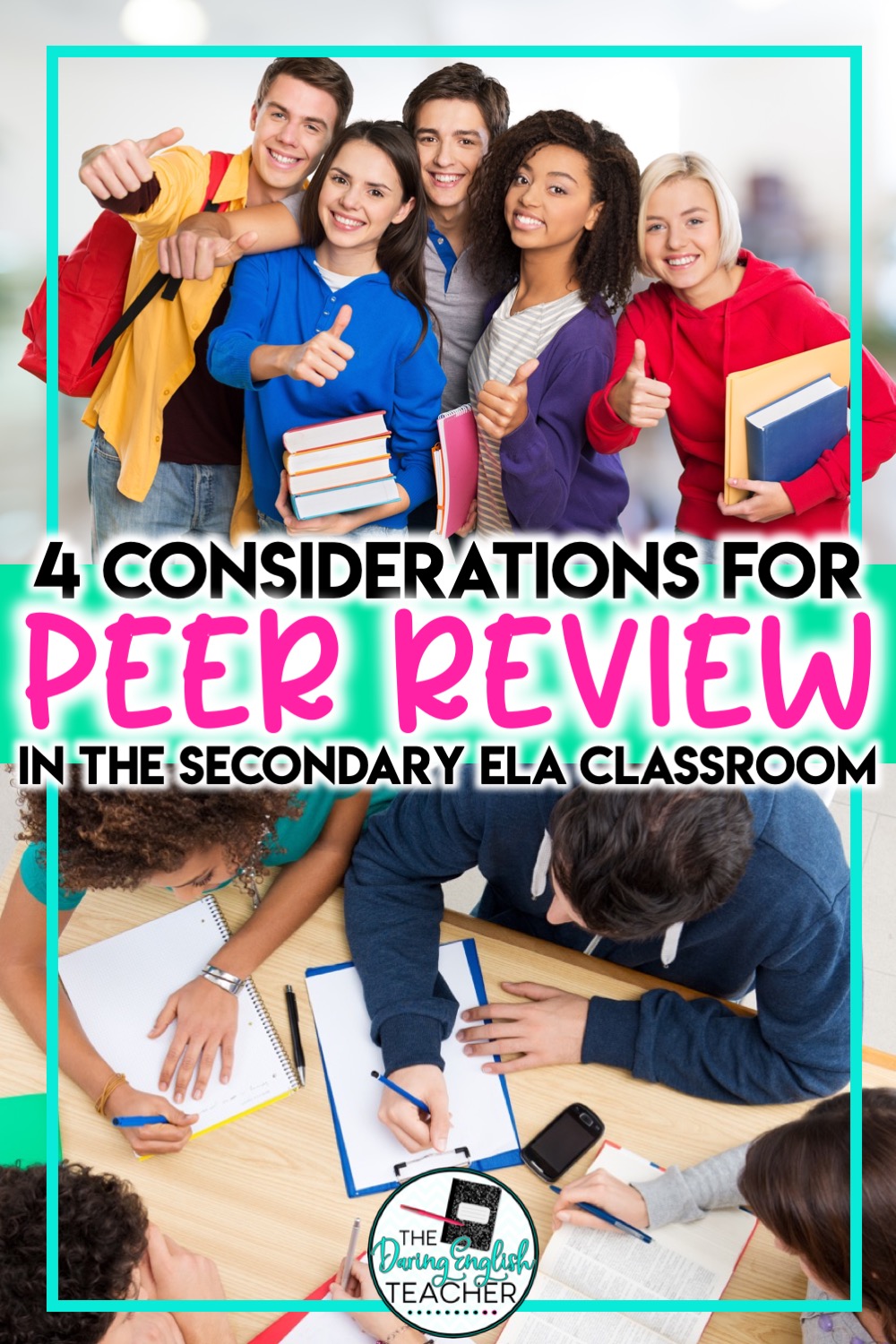One of the most beneficial parts of the writing process for students in middle school ELA and high school English classes is participating in effective and meaningful peer editing. This post will discuss four teaching strategies for implementing a successful peer editing program in your classroom.
Students are used to receiving criticism on their writing after it has been handed in, graded, and returned. However, feedback prior to a paper’s due date can improve a student’s writing and proofreading skills. Opinions held by other students are valid and can help change how a student thinks about the writing process. Furthermore, the process of peer-review is a standard step used in colleges and universities, and using it in a middle or high school classroom can help prepare students for future education. Here are four steps to implementing peer-review in your classroom.
Peer Editing Strategy 1: Create a comfortable environment
Some students may be hesitant to let peers review their work. It can be daunting for a student if he believes that he will be criticized. Encourage your students to review peers’ papers gracefully while also finding elements to praise. While constructive criticism is productive, positive feedback can be equally as helpful.
At the start of a new school year, it is helpful to encourage students to partner up with someone whom they are comfortable with for the first peer editing session of the school year
Peer Editing Strategy 2: Material up for critique
Tell your students what you want them to look for. Without structure, many students will look only for spelling and grammar mistakes. While it is essential to bring these errors to the attention of the writer, more of the paper’s content should be analyzed. Tell your students to look at elements like passive voice or word choice. Reading for tone and voice can help with the overall quality of a piece of writing.
In my peer editing stations activity, there are four focused peer editing stations that students circle through. With each station, there is a specific task for students to complete. Providing students with structure and guidance as they complete the peer review process is critical for facilitating an effective peer editing session in the classroom.
Join my email list!
Subscribe to receive updates from The Daring English Teacher.
Thank you for subscribing! You will soon receive updates, freebies, and teaching ideas.
Finally, stress that it is also important to look at the argument of the piece, particularly the thesis statement, organization, and overall persuasiveness of the information presented. If a bibliography is required, this should be looked at as well.
Peer Editing Strategy 3: Discussions
After each student takes the time to review and critique a piece written by a peer, students should engage in conversation with their reviewer. Have them discuss each piece’s strengths and weaknesses. Students may discover a lot of helpful material by asking questions and hearing the thoughts and opinions of a peer.
One way to help students with the discussion part of the peer review process is to write suggested speaking points on the board. Students can discuss the best part of each others’ essays, what they can do to improve the essays, and how the evidence connects to the topic sentences.
Peer Editing Strategy 4: Self-assessment
Once they have read and heard the thoughts of their peers, students should take the time to reflect on what they have learned about their writing. What errors can they fix? If there was something that they did particularly well, how can they echo that quality throughout the piece? Time should be set aside for students to make revisions to their own writing.
Additionally, encourage students to go through the steps of peer-review with their papers as this will improve individual proofreading skills.
Resources for Peer Review



